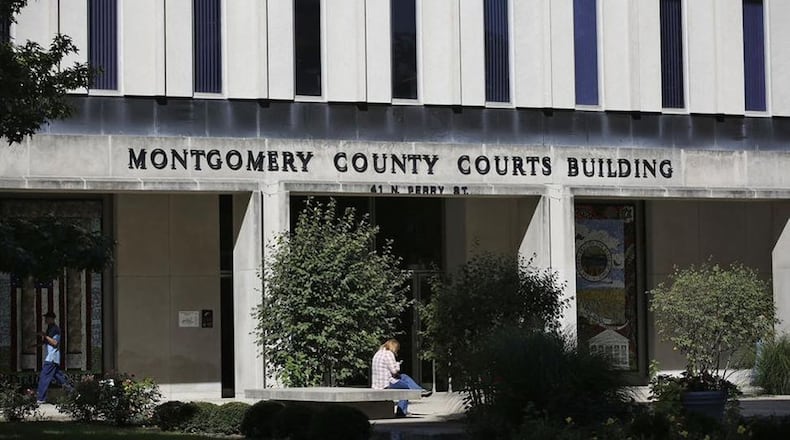Montgomery County’s courthouse, located on Perry Street, houses 110 employees. The Montgomery County Common Pleas Court also takes up two floors at the Reibold building on Fourth Street for the court’s probation department. Sixty-four courthouse employees work out of that building.
Wiseman said the courthouse would like to move employees working in the Reibold building to an office space closer to the courthouse, pointing to the proximity of spaces like the 130 Building on West Second Street.
“We would rather that there be a very short distance between us and probation, a very short distance and a very safe and secure part of town for probationers to move between the courthouse and probation,” Wiseman said.
This isn’t the first time courthouse leaders have voiced concerns over space.
Montgomery County paid more than $12,000 for an uncompleted space utilization study for the Montgomery County Common Pleas Court in 2023 through the National Center for State Courts. Courthouse leaders withdrew from the study that same year, and county officials approved the cancellation of the study contract by their recommendation.
“We all want the same things,” said Montgomery County Administrator Michael Colbert. “So if we go down this path, we’ve got to stick with it. We have to stay focused, and we can’t just start a process and stop it.”
Montgomery County Court Administrator Steve Hollon said courthouse leaders had a few concerns related to the study, one being a recommendation surrounding shared courtroom space. But courthouse officials also wanted to identify ways they could create more space within the building themselves before continuing with a study.
But if a shift from the Reibold building isn’t feasible in the near future, Hollon said, work to ramp up security measures and other needs at the Reibold building should be addressed. The courthouse has more than 3,000 clients who use probation services.
When Montgomery County Clerk of Courts Mike Foley in 2024 returned $2 million from his office to the county’s general fund, he set aside half of that for courthouse improvements.
Montgomery County courthouse leaders identified structural changes to the building as a top priority for next year. This includes work on elevators, holding cells and some other security measures.
Wiseman said courthouse leaders have already taken certain measures to create space in-house. The courthouse evicted the Montgomery County Law Library earlier this year.
Law libraries are open to the general public and are spaces where residents can be directed by the law librarian to legal information and resources they may need. Montgomery County’s law library is now also located in the Reibold building.
The courthouse’s case volume has fluctuated between 10,000 to nearly 11,000 criminal and civil cases annually since 2015, save for three pandemic years that saw lower-than-average case volumes. But other programs at the court continue to grow.
In addition to typical civil and criminal court dockets, Montgomery County Common Pleas Court has specialized dockets that are certified by the Ohio Supreme Court and are tailored to specific sets of needs.
In Montgomery County, this includes a Veterans Treatment Court, Mental Health Court and Kushinda Court — a program geared toward young Black men — and other programs. These programs in 2024 saw hundreds of participants.
“This is a very intensive process,” said Judge Gerald Parker Jr. “We need a lot of classroom space. We need a lot of assembly space. We need breakout spaces. We need space for the probation officers who undertake this incredible work.”
About the Author

